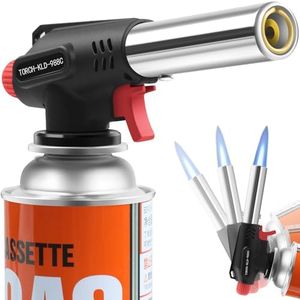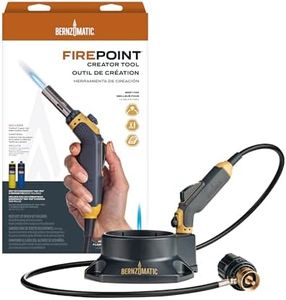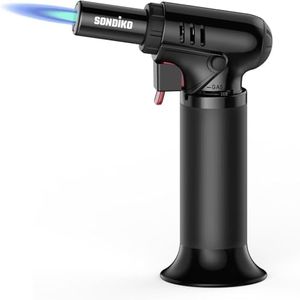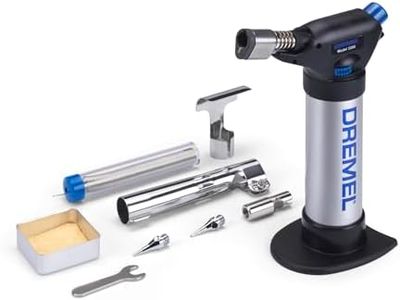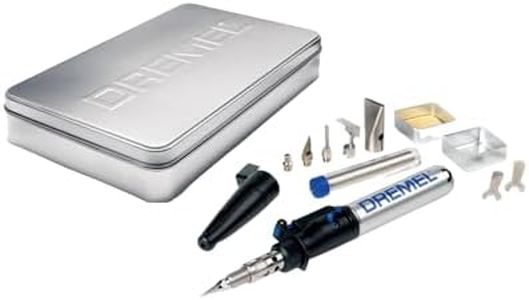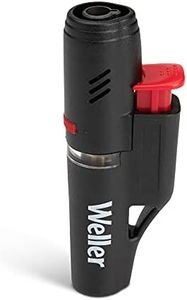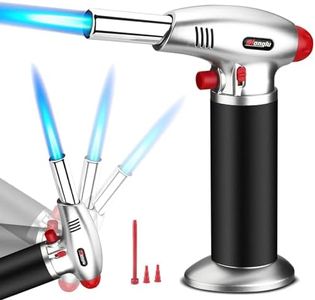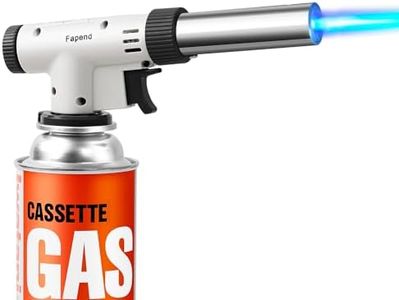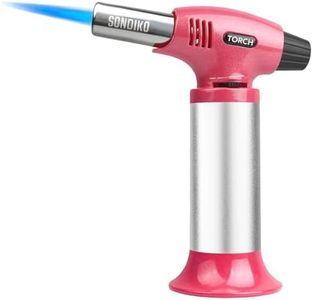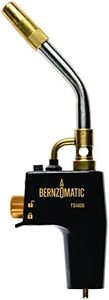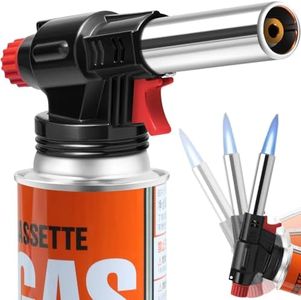We Use CookiesWe use cookies to enhance the security, performance,
functionality and for analytical and promotional activities. By continuing to browse this site you
are agreeing to our privacy policy
10 Best Butane Torches
From leading brands and best sellers available on the web.Buying Guide for the Best Butane Torches
Picking the right butane torch can make tasks like cooking, crafting, or even small repairs much more efficient and enjoyable. When choosing a butane torch, it's important to focus on how you'll use it—will it mostly be for culinary tasks, jewelry work, or something else? Understanding your main purpose will help you balance safety, size, power, and other features for the best fit. Here are the key specifications to consider and how they relate to your needs.Flame Size and AdjustabilityFlame size refers to how big or small the torch's flame can get, and adjustability is about how much you can change it. A larger, adjustable flame is useful if you're working with bigger surfaces, like browning a crème brûlée or soldering metal pieces. However, for fine work such as jewelry detail or small crafts, a smaller, more controlled flame is safer and more precise. Many torches let you control this with a simple dial or switch, so consider how much flexibility you'll need for your typical projects.
Ignition TypeThe ignition type describes how the torch starts—either with a manual spark, a piezo-electric button, or by using an external flame. Piezo-electric ignitions are the easiest since you just press a button, making them quick and safe if you’ll be turning the torch on and off often. Manual or external ignition might take more skill and could be less convenient for frequent use. Think about how often you’ll start the torch and how important one-handed operation is for your tasks.
Tank CapacityTank capacity is how much butane the torch can hold, affecting how long it can run before needing a refill. Bigger tanks mean longer uninterrupted use, which is handy for extended projects or professional use. However, a larger tank makes the torch bulkier and heavier, so for quick jobs or if you want a portable tool, a smaller tank is easier to handle. Consider the length of time you'll typically use the torch each session and whether convenience or duration matters more to you.
Burn TimeBurn time is the maximum amount of time the torch can continuously operate on a full tank. It depends on both the efficiency of the torch and its tank size. If you need to use the torch for long stretches without refilling (like in workshops or for big kitchen tasks), look for higher burn times. If you'll be using it in short bursts, burn time is less critical. Your projects’ demands—short and frequent or long and continuous—should guide your choice here.
Safety FeaturesSafety features can include flame locks, child-proof switches, and automatic shut-off. These are crucial if you're in a busy household, working around children, or will use the torch frequently. Enhanced safety features reduce the chance of accidents, especially for beginners or in environments where others may use the tool. Decide how much peace of mind you need, especially if safety is a key concern in your workspace.
Size and WeightSize and weight affect how comfortable and easy the torch is to handle. Lighter and smaller models are easier to maneuver for delicate work or if you have smaller hands. Larger torches can be unwieldy for fine details but suit heavy-duty, stationary tasks. Match the torch’s size and weight to your typical use—go smaller for agility and detail, bigger for stability and heavier projects.
Refill MechanismThe refill mechanism is about how easy it is to add butane to the torch. Some torches have clear windows to show fuel level and feature simple, mess-free refill valves. If you plan to use the torch often or aren’t experienced, a straightforward, reliable refill system can save time and avoid spills. Think about how often you’ll be refilling and whether you value ease and clarity in the process.

